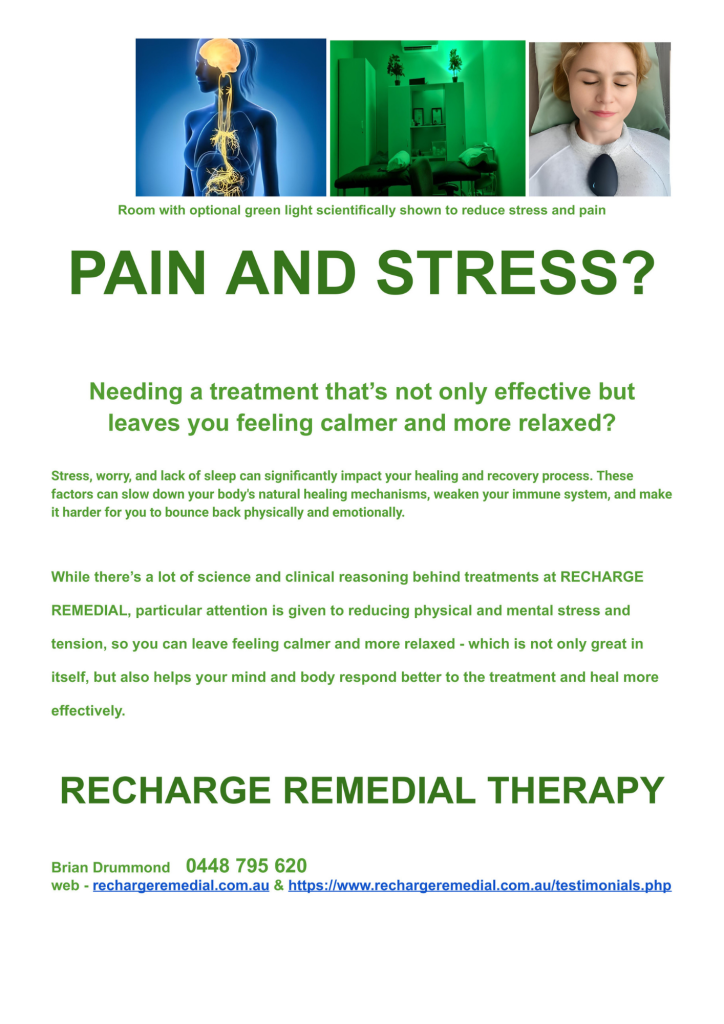By Brian Drummond – Recharge Remedial Therapy

Why do I always try to make treatments as comfortable as possible, and aim to have each person leave more physically and mentally relaxed than when they arrived?
A relaxed mind and body responds better to treatment compared to a stressed state due to the intricate workings of our nervous system. When we’re stressed, our body activates the sympathetic nervous system, triggering the “fight or flight” response. This state diverts energy away from healing processes, increases inflammation, and can impede the effectiveness of treatments.
The vagus nerve plays a crucial role in counterbalancing this stress response. As part of the parasympathetic nervous system, it promotes a “rest and digest” state, which is optimal for healing and recovery. When the vagus nerve is stimulated, it helps reduce heart rate, lower blood pressure, and decrease inflammation, creating an ideal environment for the body to respond to treatments.
In addition to treating specific issues such as back, neck and knee pain etc., it helps to pay attention to calming the nervous system to enhance treatment efficacy. Various techniques can be employed to calm the autonomic nervous system and promote relaxation, including but not limited to:
PhysioKey therapy: This non-invasive treatment can help modulate pain signals and promote healing and helps shift the nervous system from fight or flight to rest/digest/repair.
Acupuncture point stimulation: This technique can activate the parasympathetic nervous system, reducing stress and promoting relaxation.
Cupping therapy: has also been shown to have wide ranging effects including calming the nervous system
Sensate pebble: This device uses vibrations to stimulate the vagus nerve, helping to induce a calm state.
These approaches aim to shift the body from a stressed “fight or flight” state to a more relaxed “rest and digest” mode, allowing for better treatment outcomes and leaving clients feeling calmer and more relaxed.
It is important to take time to understand each individual’s unique situation and needs. This personalized approach allows for tailored treatments that address specific concerns and maximize effectiveness. By considering factors such as lifestyle, stress levels, and health history, we can create a treatment plan that not only addresses immediate concerns but also promotes long-term well-being and resilience to stress.
Sometimes the whole treatment may be dedicated to relief of mental and physical stress. For example, when it is requested, or when a client is being treated elsewhere for an issue such as back pain etc. and needs treatment specifically aimed at stress relief to help that treatment be even more effective.

